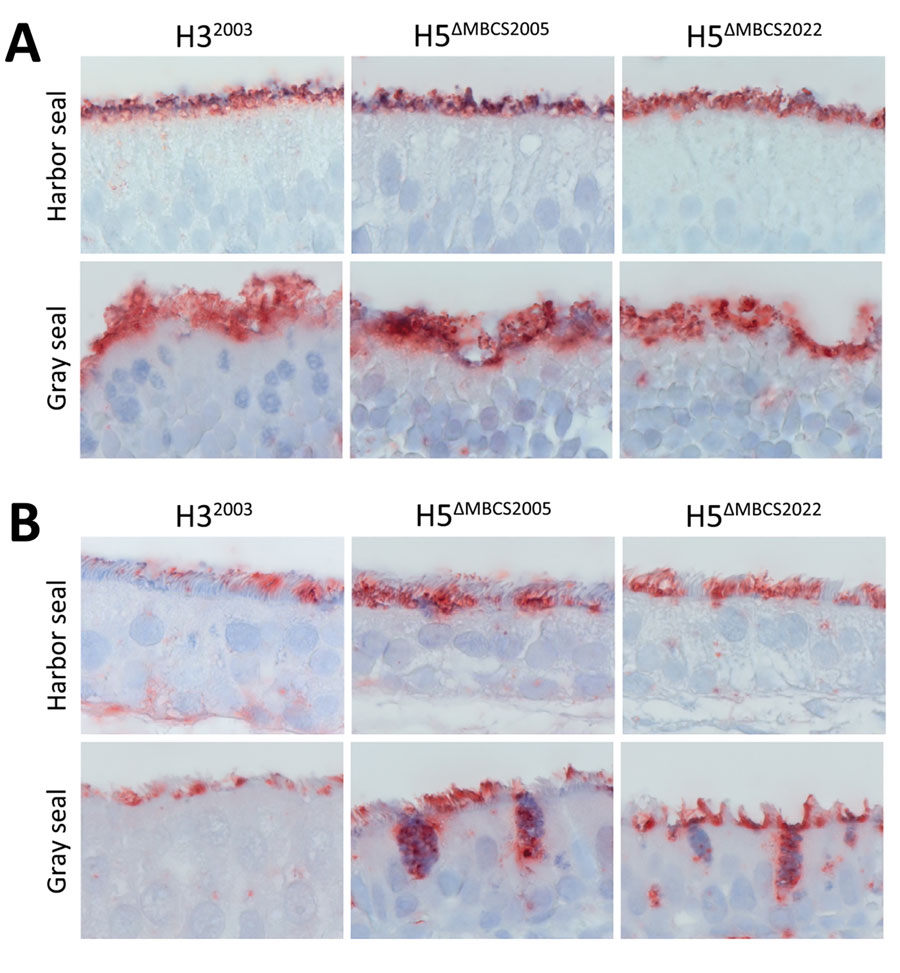Volume 31, Number 9—September 2025
Research
Attachment Patterns of Avian Influenza H5 Clade 2.3.4.4b Virus in Respiratory Tracts of Marine Mammals, North Atlantic Ocean
Figure 1

Figure 1. Attachment of influenza A viruses to the olfactory mucosa and respiratory mucosa of seals in study of attachment patterns of avian influenza H5 clade 2.3.4.4b virus in respiratory tracts of marine mammals, North Atlantic Ocean. Hematoxylin and eosin stain (red) shows attachment of human seasonal influenza A virus H32003 and avian influenza A viruses H5ΔMBCS2005 and H5ΔMBCS2022 to the olfactory (A) and respiratory (B) mucosa in the nasal turbinate of harbor seals (Phoca vitulina) and gray seals (Halichoerus grypus). Photos were taken at high magnification (×1,000) of the apical side of the mucosa; for this reason, Bowman’s glands in the submucosa are not represented. H32003, A/Netherlands/213/2003 (H3N2); H5ΔMBCS2005, A/Indonesia/05/2005 (H5N1); H5ΔMBCS2022, A/Caspian gull/Netherlands/1/2022 (H5N1).
1Current affiliation: Prince of Songkla University, Songkhla, Thailand.